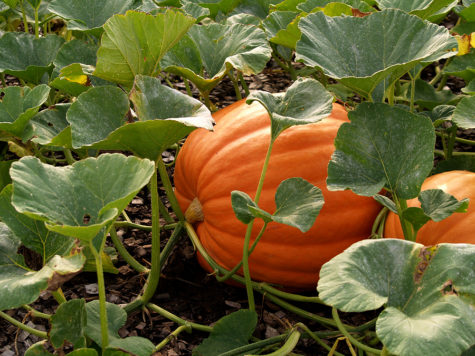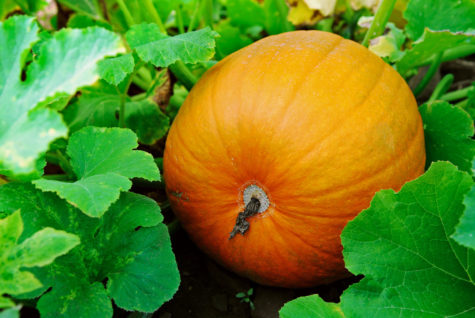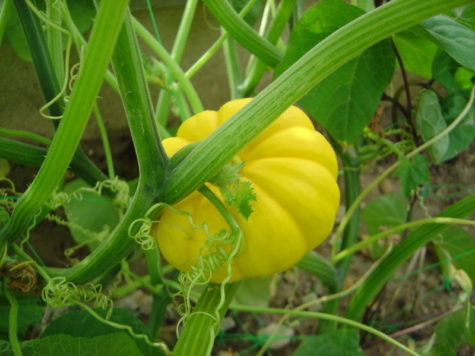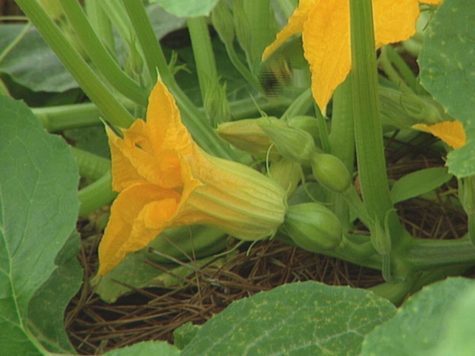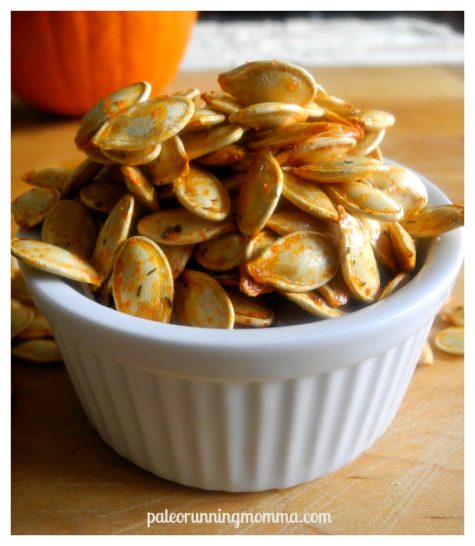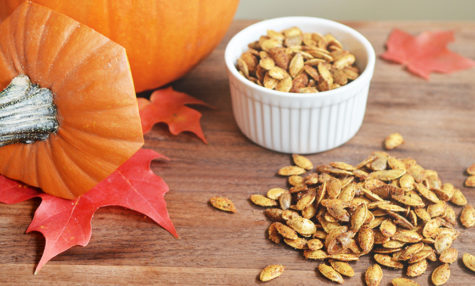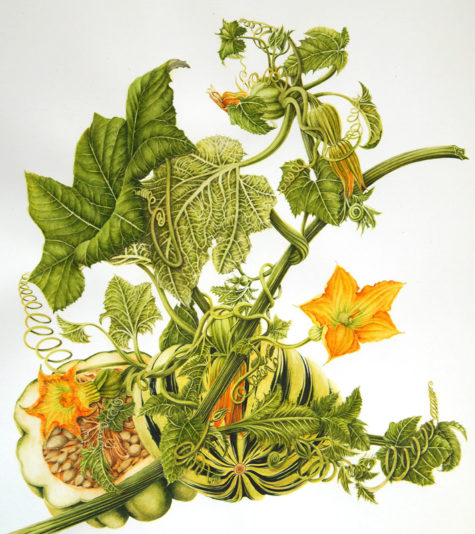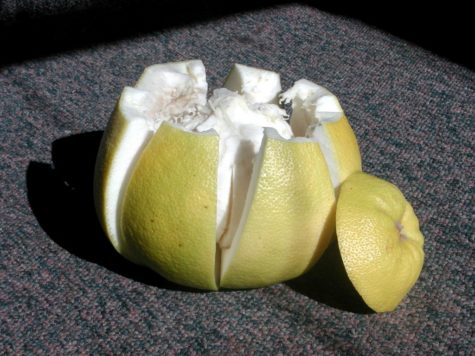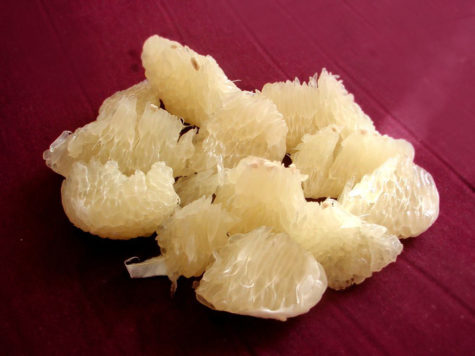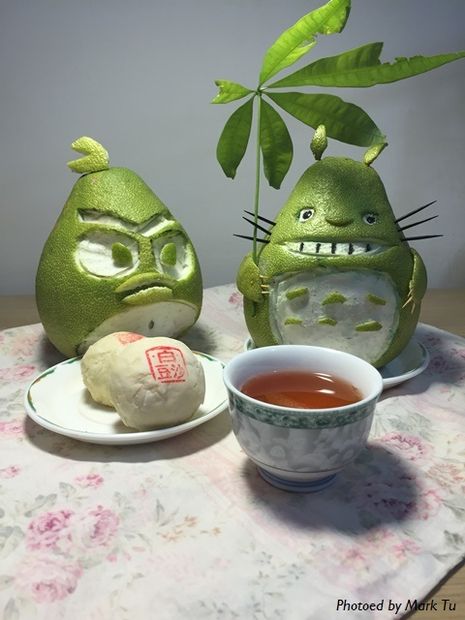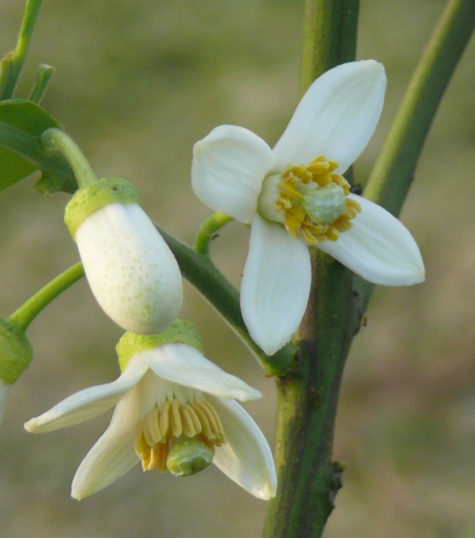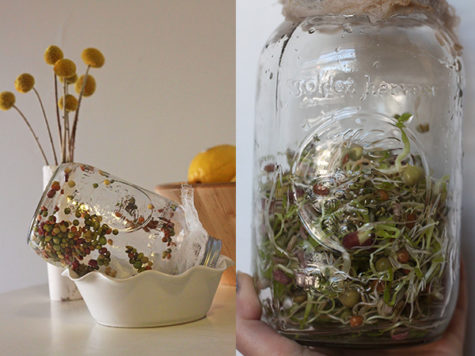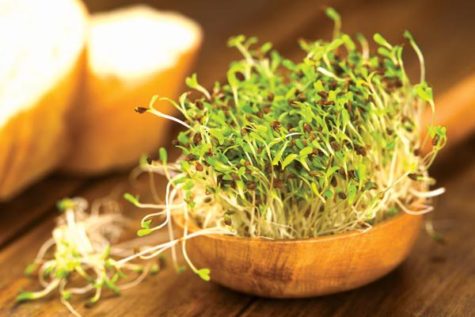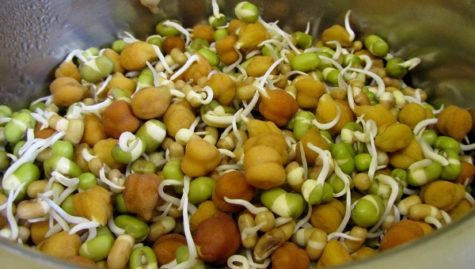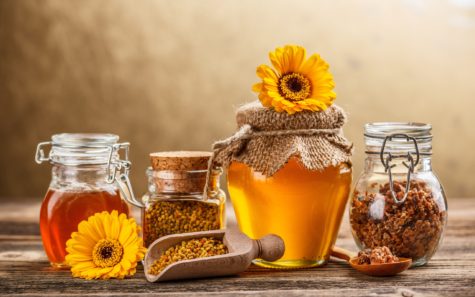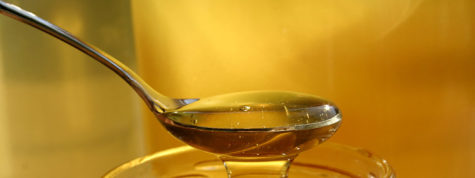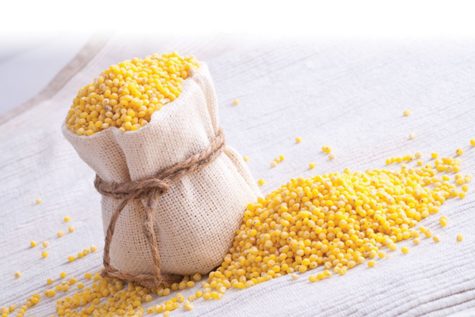Individual Foods
Pumpkin
If you want to look and feel beautiful, consider including pumpkin as part of your diet.
Pumpkin has a range of fantastic health benefits, including being one of the best-known sources of beta-carotene. Beta-carotene is a powerful antioxidant. It also gives orange vegetables and fruits their vibrant color. The body converts any ingested beta-carotene into vitamin A.
Beta-carotene is a powerful antioxidant. It also gives orange vegetables and fruits their vibrant color. The body converts any ingested beta-carotene into vitamin A. Consuming foods rich in beta-carotene may reduce the risk of developing certain types of cancer, offer protection against asthma and heart disease, and delay aging and body degeneration. Pumpkins are also a powerful source of fiber.
The potassium contained within pumpkins can have a positive effect on blood pressure. The antioxidants in pumpkin could help prevent degenerative damage to the eyes.
Many studies have suggested that eating more plant foods such as pumpkin decreases the risk of obesity and overall mortality. It can also help prevent diabetes and heart disease, and promote a healthy complexion and hair, increased energy, and a healthful body mass index (BMI).
Pumpkin has been implicated in helping with the following:
- Aids in weight loss (due to fiber content)
- May reduce cancer risk (due to the antioxidant beta-carotene)
- Protects the skin (due to carotenoids)
- Sharpens eyesight (due to high levels of vitamin A)
- Maintains prostate health (due to zinc content of seeds)
- Helps boost mood and prevent depression (due to tryptophan content in seeds)
- Improves heart and muscle function (due to potassium and magnesium content)
- Improves immune system (due to zinc and vitamin C content)
- Helps expel intestinal worms (due to cucurbitins)
More on this “super” food can be found here: Encyclopedia of Herbology: Pumpkin
Pumpkin – It’s What’s For Dinner:
The edible parts of a pumpkin are the leaves, fruit and the seeds. High nutrients and medicinal properties in pumpkin leaves, fruit and seeds make it an attractive health food proposition.
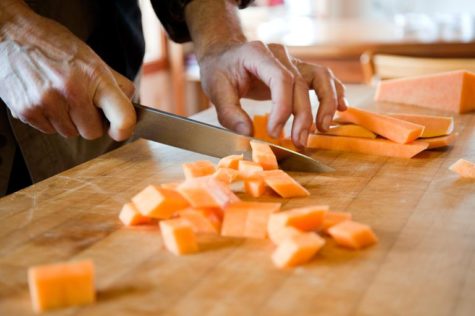
The pumpkin’s flesh can be either sweet or bitter, and it is commonly used in pies, scones, soups, stews, and other recipes.
- Pumpkins are high in protein and fiber, but low in fat. They are an excellent source of iron and vitamin A.
- Cooked pumpkin provides about 20 calories and 4.90 g of carbohydrates per 100 g serving.
The young fruit of a pumpkin is best used in savory entrees and sides, while the mature fruit goes best in pies and other sweet desserts. Medium-sized varieties, like ‘Autumn Gold’, ‘Jack-o-Lantern’, and ‘Spirit’ are among the best for culinary use; however, larger varieties like ‘Big Tom’ and ‘Jackpot’ are also popular.
When ripe, the pumpkin can be boiled, steamed, or roasted. Pumpkins that are still small and green may be eaten in the same way as pumpkin or zucchini.
In addition the fruit can be baked by cutting it into two halves, scooping out seeds and placing the hollow side down in a big tray followed by baking in an oven.
Preparing fresh pumpkin at home will deliver the most benefits for your health, but canned pumpkin is also a great choice. Pumpkin retains many of its health benefits in the canning process.
Pumpkin pie is a sweeter way to incorporate the benefits of pumpkin into the diet. Be sure to make a pumpkin puree rather than buying pre-made. Steer clear of canned pumpkin pie mix. This is usually placed next to the canned pumpkin in grocery stores, and is sold in a similar can. It contains added sugars and syrups.
- Canned pumpkin should have only one ingredient: Pumpkin.
Pumpkin is a highly nutrient-dense food. It is rich in vitamins and minerals but low in calories. Pumpkin seeds, leaves, and juices all pack a powerful nutritional punch. Although the variety of pumpkins that usually ends up carved into a jack-o-lantern is perfectly edible, it is best to cook with the sweeter and smaller sweet or pie pumpkin varieties.
Make sure the pumpkin has a few inches of stem left and is hard and heavy for its size. Store uncut pumpkins in a cool, dark place for up to 2 months.
The most common preparation methods of pumpkin involve desserts like custards and pies. One of the simplest ways to enjoy the contents is to gently roast or dehydrate the seeds in sea salt and other preferred spices.
There are many ways pumpkin can be incorporated into desserts, soups, salads, preserves, and even as a substitute for butter.
- Use pumpkin puree or canned pumpkin in place of oil or butter in any baking recipe.
- Make a quick treat of pumpkin chocolate yogurt by combining Greek yogurt, pumpkin puree or canned pumpkin, honey, cinnamon, and cocoa powder.
Harvesting and Preparing the Flowers
Pumpkin flower blossoms have a light, buttery taste. They are sometimes prepared as vegetables in a number of pasta, soup, and salad recipes.
The female blossoms will become the fruit so in order to preserve your harvest, it is best to pick the male blooms. Being aware of the difference between male and female blooms is important to know when picking pumpkin blossoms.
Male pumpkin blossoms are hairier and have a thin base where they attach to the stem. Females have a thick bulge, which is the ovary, where they grow from the plant.
Morning is the best time for harvesting pumpkin flowers. Choose male flowers when they are still in bud form. Male flowers grow first on the plant but the fully formed blooms are hairy and difficult to handle in the kitchen. Female blooms are considered the tastiest but you should minimize their harvest if you want fruit on the plant.
Give a gentle squeeze to the back of the bloom when picking pumpkin flowers. This will help you detect the bulb of a female or the flat end of a male flower.
- How to Store Pumpkin Blossoms:
The optimum condition is to use them the day of harvest. Picking pumpkin flowers and then using them immediately gives you the freshest taste of spring. Pumpkin flowers are very delicate and don’t store for long. However, there is a trick on how to store pumpkin blossoms for best flavor and to extend the life of the blooms. Keep them in the refrigerator. Male blooms last the longest and can be stored in the refrigerator for up to a week. Either sex will keep best if laid out gently on tissue or a paper towel on a dish or flat container.
- How To Prepare Pumpkin Blossoms:
Pumpkin fresh flowers add flavor to salads. Eaten as a side dish, the recipe is as follows: Pick flowers when vines are blooming, wash and roll in paper towel to dry. Dip in beaten egg, roll in fine bread or cracker crumbs and fry in buttered pan.
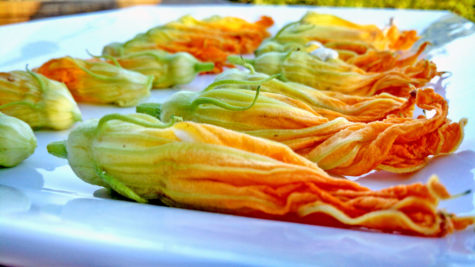
In the southwestern United States and Mexico, pumpkin and pumpkin flowers are a popular and widely available food item. They may be used to garnish dishes, and they may be dredged in a batter then fried in oil.
Pumpkin blossoms are flavorful and colorful when used as a garnish on salads. Remove the anthers inside, wash, dry the flowers, and use them whole or chopped. Stuff the blooms with rice, herbs or cheese when cooking with pumpkin flowers. You can also pickle, deep fry, or can pumpkin blossoms. If you cook the flowers, you can freeze them.
The flowers can be eaten straight off of the plant, added them into a salad, and for a nice breakfast treat, they can be dipped into pancake batter, cooked in a skillet.
Whichever method you choose, prepare the blooms as quickly as possible for best flavor and texture. Harvesting pumpkin flowers is easy and a great way to put the male blooms to use rather than having them simply fall from the plant to waste away.
Harvesting and Preparing the Leaves
Pumpkin leaves are edible. They are chock-full of iron, and may be prepared like other dark green, leafy vegetables. How do they taste? Here’s a review:
“The pumpkin greens lacked any bitterness that other greens tend to have, which surprised me. These might be the sweetest greens I have eaten. Even my son and wife enjoyed them. The flavor reminded me of a mixture of green beans, broccoli, spinach and asparagus.”
Italian pasta recipes include the leaves and stems, blanched briefly, then fried with oil and garlic before being tossed with chopped tomatoes. The Malaysian dish Pucuk Labu combines smaller, tender pumpkin leaves and shoots with anchovies, garlic and sliced onions, all simmered in rich coconut milk.
Pick the young-medium aged leaves (not the older tougher ones), and use them in cooked recipes like you would a spinach or a heavy winter green.
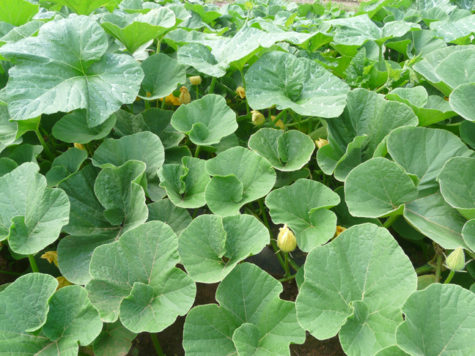
Covered in fuzz and possessing a thick, fibrous spine, pumpkin leaves aren’t all that intuitively edible. They take a little bit of advance preparation before you can use them in recipes.
Here is a simple method:
“Holding the leaf upside down by its stem, you see that the stem is hollow. Use your thumbnail to split half or a third of the stem and snap it backward so that the flesh breaks cleanly, but the outer fibers do not. Pull gently, removing the fibers from the outside of the stem and the back of the leaf. Repeat until you have de-strung a good pile, because, like all greens, pumpkin leaves cook down quite a bit.”
Once you’ve de-strung a pile of pumpkin leaves, you can cook them in a variety of ways. In Malawi, they are often simmered simply with tomatoes just for a few minutes until the leaves are tender.
Harvesting and Preparing the Seeds
Pumpkin seeds are a good source of plant protein, high mineral content, and vitamin F.
Traditional folk medicine touts pumpkin seeds as an effective treatment for prostate enlargement. Anti-inflammatory agents, known as phytosterols, combine with the healing properties of zinc to potentially reduce the size of the prostate.
Pumpkin seeds are just about the richest natural sources of zinc nutrition ever found. The use of pumpkin seeds for their beneficial effect on the prostate gland is as old as the ages. (Referred to as He-man power).
Pumpkin seeds are usually roasted and consumed as healthy, protein-packed snacks.
To harvest your pumpkin seeds, slice open your pumpkin (to eat or to make as a jack-o-lantern). Scoop out the seeds with your hands or a large, sturdy spoon. Place the seeds in a bowl. *Some pumpkin varieties have seeds with white husks over the nut meat, and some just contain the green nutmeat, aka “pepitos.”
You can process and eat pumpkin seeds the same way, regardless of the variety.
Heat a frying pan and add enough high heat vegetable oil (we like organic sunflower, grapeseed, or raw coconut oil) to sauté them. Once the pan is hot, add the pumpkin seeds. *Don’t worry if there is a little bit of pumpkin string still attached, this cooks up fine and adds some nice flavor & nutrition.
As soon as the seeds are in the pan, add some fresh ground sea salt. Stir repeatedly to ensure light, even browning uniformly on the seeds’ surfaces. Let them cool down, but eat them while they’re still warm for best flavor! They’ll also store for a long time and make a great, healthy alternative to potato chips.
Nutritional breakdown
According to the USDA National Nutrient Database, one cup of cooked, boiled, or drained pumpkin without salt contains:
- 1.76 g of protein
- 2.7 g of fiber
- 49 calories
- 0.17 g of fat
- 0 g of cholesterol
- 12.01 g of carbohydrate
This amount of pumpkin also provides:
- more than 200 % of the recommended daily allowance (RDA) of vitamin A
- 19 % of the RDA of vitamin C
- 10 % or more of the RDA of vitamin E, riboflavin, potassium, copper, and manganese
- at least 5 % of thiamin, B-6, folate, pantothenic acid, niacin, iron, magnesium, and phosphorus
In addition to the meat, one can also consume the green seeds inside their shell, which also provides a concentrated dose of nutrition, such as:
- An excellent source of vitamin K
- Rich in riboflavin, folate, thiamin, B6, and niacin
- Good source of vitamin A
- Excellent source of manganese, magnesium, phosphorus, iron, copper, zinc, and potassium
- Contains beneficial amounts of selenium
- Excellent source of healthy fats and dietary fiber
- Quality source of vegan protein (1 ounce yields 7 grams of protein)
Around The World
Pumpkin leaves are traditional vegetables of choice to many communities in Africa, North America and Asia. This is because of their ease of availability, rich in nutrients and less demanding husbandry. The leaves are normally mashed with potatoes, maize, beans and bananas to make a delicious meal.
- In Tanzania, pumpkin leaves, peanut butter, onion, chili and coconut cream are nicely blended to make a soup called ‘M’chicha Wa’nazi’.
- In Kenya, ‘Mukimo’ is a delicacy prepared by mixing well cooked maize, peeled potatoes and mashing them together with pumpkin leaves and sometimes boiled pumpkin fruit slices.
- In the Middle East, pumpkin is used for sweet dishes; a well-known sweet delicacy is called halawa yaqtin.
- In South Asian countries such as India, pumpkin is cooked with butter, sugar, and spices in a dish called kadu ka halwa.
- Pumpkin is used to make sambar in Udupi cuisine.
- In Guangxi province, China, the leaves of the pumpkin plant are consumed as a cooked vegetable or in soups.
- In Australia and New Zealand, pumpkin is often roasted in conjunction with other vegetables.
- In Japan, small pumpkins are served in savory dishes, including tempura.
- In Myanmar, pumpkins are used in both cooking and desserts (candied). The seeds are a popular sunflower seed substitute.
- In Thailand, small pumpkins are steamed with custard inside and served as a dessert.
- In Vietnam, pumpkins are commonly cooked in soups with pork or shrimp.
- In Italy, it can be used with cheeses as a savory stuffing for ravioli.
- In Nigeria, pumpkin leaves are used to make soup, cassava salad, plantain porridge and ‘Asaro or Ebe’ (yam pottage).
- Pumpkin leaves are also eaten in Zambia, where they are called chibwabwa and are boiled and cooked with groundnut paste as a side dish.
- Pumpkin leaves, usually of C. moschata varieties, are eaten as vegetable in Korean cuisine.
Borrowed from: Encyclopedia of Herbology
What is a Pomelo?
Pomelos are a must during the mid-autumn festival or mooncake festival;
they are normally eaten fresh.
The pomelo (Citrus maxima or Citrus grandis) is a citrus fruit native to South East Asia. It is usually pale green to yellow when ripe, with sweet white (or, more rarely, pink or red) flesh and very thick pudgy rind. It is the largest citrus fruit, 15–25 cm in diameter, and usually weighing 1–2 kg. Other spellings for pomelo include pummelo, and pommelo, and other names include Chinese grapefruit, jabong, lusho fruit, pompelmous, Papanas, and shaddock. Pomelos are also referred to as chakotara in Pakistan, Afghanistan and India. In the Indian State Manipur this fruit is known as Nobab.
Cultivation and uses
The pomelo tastes like a sweet, mild grapefruit, though the typical pomelo is much larger in size than the grapefruit. It has very little, or none, of the common grapefruit’s bitterness, but the enveloping membranous material around the segments is bitter, considered inedible, and thus usually discarded. The peel is sometimes used to make marmalade, or candied, then (sometimes) dipped in chocolate. The peel of the pomelo is also used in Chinese cooking. In general, citrus peel is often used in southern Chinese cuisine for flavouring, especially in sweet soup desserts.
In the Philippines, the fruit is known as the suhâ, or lukban, and is eaten as a dessert or snack. The pomelo, cut into wedges, is dipped in salt before it is eaten. Pomelo juices and pomelo-flavored juice drink mixes are also common.
In Thailand, the fruit is called som-oh (ส้มโอ), and is eaten raw, usually dipped into a salt, sugar and chili pepper mixture.
In Malaysia, Tambun town near Ipoh, Perak is famous for pomelos. There are two varieties: a sweet kind, which has white flesh, and a sour kind, which has pinkish flesh and is more likely to be used as an altar decoration than actually eaten. Pomelos are a must during the mid-autumn festival or mooncake festival; they are normally eaten fresh.
More about the festival can be found on The Pagan Calendar, here:
The tangelo is a hybrid between the pomelo and the tangerine. It has a thicker skin than a tangerine and is less sweet. It has been suggested that the orange is also a hybrid of the two fruits.
In Manipur, nobab is used as a major source of vitamin C. This fruit holds a high place in the culture and tradition of Manipur. Many religious rituals seem incomplete without this fruit.
The flowers are beautiful, aren’t they?
It’s Tea Time
I think it’s time for a spot of tea!
First up, let’s talk about the tea.
What’s in a tea? Well, hundreds of benefits are hidden within this coloured water that not so many people are particularly fond of. Summer is a great time to take up this wonderful habit, by creating the most appealing iced teas and thus benefiting from their medicinal and restorative powers.
What few of us know is the fact that the word “tea” is correctly used for the following types only:
- Green tea
- Black tea
- White tea
- Oolong tea
- Pu-erh tea
These 5 teas are definitely worth the try. The rest should simply be referred to as infusions. The five kinds are all derived from the Camellia sinensis plant, a shrub native to China and India, and contain unique antioxidants called flavonoids. They all protect against free radicals that can contribute to cancer, heart disease, and clogged arteries. Oolong and black teas are oxidized or fermented, so they have lower concentrations of flavonoids than green tea, but nevertheless their antioxidising power is still high.
Green tea makes you smart and slim
Green tea is supposedly the healthiest beverage on our planet. It contains more than just plain caffeine. Apart from the fact that it produces a response without causing the “jittery” effects associated with too much caffeine, it also has the amino acid L-theanine, which increases the activity of the inhibitory neurotransmitter GABA, which has anti-anxiety effects. It also increases dopamine and the production of alpha waves in the brain.
In other words, these two components mixed together are particularly capable of improving overall brain function.
Apart from making you smart, your drinking at least three cups of green tea a day is recommended to raise the body’s metabolic rate. It is believed that the catechins found in it increase the production of heat within the body, which is related to burning calories. These compounds may inhibit certain chemicals in the brain, thus prolonging this process.
Black tea makes your teeth healthy
Black tea was proved to reduce plaque formation as well as restricting bacteria growth that promotes the formation of cavities and tooth decays. The flavonoids found in black tea kill and surpass cavity bacteria as well as inhibit the growth of bacterial enzymes that form along with that sticky white stuff on our teeth that attracts plaque like a magnet.
White tea keeps your bones healthy
White tea’s antioxidants and anti-aging properties not only protect and help reverse damaged skin, but a regular intake of white tea can improve bone density and strength, and may provide a natural relief from the symptoms of osteoporosis.
Oolong tea makes your skin look healthy and young
According to the Tea Association of the United States, oolong tea falls somewhere between green and black teas, as its leaves are only partially oxidized.
Patients diagnosed with eczema are recommended to drink 3 cups of oolong tea per the day. The beneficial results of oolong tea are likely to be seen in less than a week in these patients. All oolong tea drinkers show remarkable improvement in their skin.
Keep in mind that despite its miraculous effects, oolong tea tends to be very high in caffeine, which is not the healthiest component of this beverage. So if a healthy skin is your aim, try not to exaggerate and drink more than 3 cups a day.
Pu-erh tea is the best hangover cure
In traditional Chinese herbalism, pu-erh tea is considered to open the meridians and warm the spleen and stomach. It helps digestion and cleans your blood. It is often consumed after heavy meals or drunk as a hangover cure or preventative.
The microbial aging of pu-erh tea can result in the production of lovastatin, a natural statin that is used to lower levels of bad cholesterol such as LDL. One study found that the longer this type of tea was aged, the more statin was produced.
So drink up! It is recommended to have a slightly hot cup of tea every time you feel hot, and your body’s temperature will return to its regular value.
How to make a good pot of tea
These are the golden rules:
- Tea loves oxygen – it helps the flavor develop, so always use freshly drawn cold water in the kettle.
- Make sure your pot is clean.
- Warm the pot by swirling a small amount of boiled water in it.
- For black tea, only pour on freshly boiled water and do not over-boil it.
- For green tea, always use the water just at the boil.
- One teaspoon of loose tea per person and one teaspoon for the pot is about right, but add as much or as little to make it to the strength you like.
- Some people believe that sugar masks the flavors in tea. Why not try a fruit tea if you prefer a sweeter taste?
- A tea cosy extends the brewing time and can make the tea bitter and stewed. A removable infuser or teabags can help to get round this problem.
How long should I allow a teabag to brew?
Twinings of London recommends that you allow the teabag to brew for two and a half to three minutes. This allows the flavor to fully develop. Then add milk or lemon or enjoy it black, whatever your preference.
And how long should I allow loose tea to brew?
We recommend that you allow loose tea to brew in a teapot for up to seven minutes. The general rule is: the larger the leaf, the longer the brewing time. Earl Grey and Lady Grey need five minutes, while a smaller leaf tea will only need about four minutes.
Does loose tea make better tea than teabags?
Both have their benefits. For many people, the ritual of preparing loose tea is a pleasure in itself, so this contributes to the enjoyment, while teabags are more convenient. The leaf size is different but the quality in the cup will be the same.
Should the milk go in first or second?
Historically, the ‘milk in first’ rule was to protect the fine bone china it was served in – it’s a very individual thing.
Sometimes I get an oily residue around my cup and on the surface of my tea – what is it?
Because of the small leaf-size in a teabag, the tea can release some essential oils which can sometimes produce a residue. However, this brown residue occurs most often in areas with hard water, so a carbon water filter will reduce this considerably.
How should tea be stored?
Tea absorbs moisture and kitchen smells. To keep your tea fresh and avoid spoiling the flavor, keep loose tea or teabags in a sealed jar or tin.
Borrowed from: The Prosperity Project
How To Make Sprouts
Use one part seed to at least three parts water. Soak in a wide-mouth jar. All measurements below yield one quart of ready sprouts. Half-gallon or larger jars are more convenient.
- 1 cup aduki beans – soak 12 hours – 3 to 5 days to sprout
- 2 tablespoons alfalfa seed – soak 6 hours – takes 5 to 6 days to sprout
- 2 tablespoons red clover seed – soak 6 hours – takes 5 to 6 days to sprout
- 1/2 cup fenugreek – soak 8 hours – 3 days to sprout
- 1 cup garbanzo beans – soak 12 hours – 3 to 5 days to sprout
- 1 cup legumes – soak 12 hours – 3 to 5 days to sprout
- 1/2 cup lentils – soak 8 hours – 3 days to sprout
- 1/2 cup mung beans – soak 8 hours – 3 to 5 days to sprout
- 1/4 cup mustard seed – soak 6 hours – takes 5 to 6 days to sprout
- 1/4 cup radish seed – soak 6 hours – takes 5 to 6 days to sprout
- 1 cup rye – soak 12 hours – 3 days to sprout
- 1 cup soy beans – soak 12 hours – 3 to 5 days to sprout
- 2 cups sunflower seeds – soak 12 hours – 2 days to sprout
- 1 cup wheat – soak 12 hours – 3 days to sprout
Instructions:
Cover the mouth of the jar with a plastic or stainless steel sprouting screen or cheesecloth, which is tied on or secured with a rubber band (sprouting jars, bags, and automatic sprouting machines are also available).
After soaking seeds for the prescribed amount of time, drain well, and keep in a warm (65 degree F) dark place. They can be covered with a cloth or bag. Sprouting time increases with more light and cooler conditions.
Rinse twice a day, ideally morning and evening. An exception is soy, which may rot if not rinsed four times daily. Keep jar tilted mouth down for better drainage. A dish drainer works well for this. Thorough rinsing and complete draining improve sprout flavor.
After three days place alfalfa, red clover, radish, and mustard sprouts in a cool place with indirect sunlight to induce chlorophyll. Continue rinsing twice daily until sprouts are ready.
Radish and mustard seed sprouts exhibit biting pungency, which adds a delightful zesty quality when mixed with other sprouts or in various dishes.
During the sprouting process, the hulls on certain seeds slough off. It is important to remove hulls from alfalfa and radish sprouts since these easily rot. Hulls from mung, aduki, and fenugreek are often removed for a lighter-tasting quality, although they can be eaten and provide fiber.
To remove the loose hulls from sprouts, place them in a large bowl of water and agitate them, further loosening and brushing them aside. Gently reach under the sprouts and lift them out of the water, without disturbing the sunken hulls, which can then be discarded.
Drain sprouts well. If refrigerated, they keep up to one week in a plastic bag or covered glass jar.
Note:
Alfalfa may not sprout in polluted tap water. Use distilled or spring water or sprout with other seeds (mung, lentil, fenugreek) in the same jar. You will have a delicious salad. Save all rinse water for cooking, watering plants, or to give your animals.
From: Healing With Whole Foods
Alfalfa Sprouts
Alfalfa is America’s favorite sprout and is considered more nutritionally concentrated than other sprouts, primarily because of its rich mineralization. The tiny alfalfa seed produces a root that can reach 100 feed into the earth, where it has access to minerals and trace elements untouched by other plants.
Alfalfa follows the doctrine of signatures: its ability to produce exceptional roots benefits our “roots,” which are often identified physiologically as our intestines and kidney/bladder functions.
Arabs were the first to discover alfalfa and found it a highly strengthening food, both for themselves and their race horses. Because of its attributes, they named it al-fal-fa, which means “father of all foods.”
From: Healing With Whole Foods
About Sprouts
Sprouts represent the point of greatest vitality in the life cycle of a plant. One clearly experiences this vitality when eating sprouts consistently. During sprouting, vitamin and enzyme content increases dramatically. At the same time starch is converted into simple sugars, protein is turned into amino acids and peptones, and crude fat is broken down into free fatty acids. Hence, the sprouting process predigests the nutrients of the seed, making it easier to assimilate and metabolize. This explains why grains and legumes, many of which are common allergens, often do not cause allergies when sprouted.
Nevertheless, the sprouting process increases the cooling attributes of the seed, which can over-cool the cold person and weaken digestion in those with low “digestive fire.” Generally if one is frail, feels cold often and/or tends toward loose stools, then sprouts must be eaten sparingly. Cooking makes sprouts more appropriate for these individuals. On the other hand, the excessive person (robust body and personality, thick tongue coating, ruddy complexion, strong radial pulse and voice) will benefit from abundant raw or lightly cooked sprouts.
In Chinese medicine, sprouts are a specific remedy for cases of stagnant liver qi (with signs such as swellings and lumps, mental depression, frustration, swollen abdomen and chest, purple-tinged or dark tongue, and/or greenish complexion).
During cold seasons, sprouts act as an excellent source of fresh vegetables. Cooking them at this time of the year balances their cooling nature. In fact, in China where sprouts have thousands of years of traditional use, they are routinely cooked. Raw sprouts have been desirable in the West because they more efficiently reduce the massive excesses occurring among the general population.
For better digestion for every type of person, large grain and legume sprouts such as aduki, lentil, corn, green peas, soy, garbanzo, and wheat can be lightly steamed and are still vital and energizing. They need to be simmered, sauteed, or steamed longer fore people who are cold or deficient.
The growth characteristics of sprouts are most appropriate for attuning one to the energetic upsurges of spring and summer.
From: Healing With Whole Foods
A Healing Bone Broth
Bone broth is the most accessible “cure-all in traditional households and the magic ingredient in classic gourmet cuisine, stock or broth made from bones of chicken, fish and beef builds strong bones, assuages sore throats, nurtures the sick, puts vigor in the step and sparkle in love life–so say grandmothers, midwives and healers.
For chefs, stock is the magic elixir for making soul-warming soups and matchless sauces. Stock contains minerals in a form the body can absorb easily-not just calcium but also magnesium, phosphorus, silicon, sulphur and trace minerals. It contains the broken down material from cartilage and tendons–stuff like chondroitin sulphates and glucosamine, now sold as expensive supplements for arthritis and joint pain.
It works great as a base for soups, sauces, grains, beans or add some kraut and a bit of miso for a delicious and easy lunch. A warm cup in the morning is a simple and nourishing tonic to begin the day. This is the flavor of love!
Here’s a simple recipe:
Every time you come upon a beef bone, like when you have steak, keep it. Collect leftover bones in a gallon bag in the freezer. Eventually, you’ll have enough for a pot of stock. If you like, you can buy some bones as well, or instead.
You can buy soup bones at a butcher store or your supermarket’s butcher counter. They might be labeled soup bones, marrow bones, or even “dog bones,” although people can eat them, too! If you don’t see them on display, ask the nice folks behind the counter, and they’ll set them aside to sell you when they remove them from the meat they process, or even order them for you.
Ingredients:
- Beef bones, about 3 quarts, or 3 pounds – you can use any mix of leftover bones or soup bones, marrow bones or bones sold for dogs
- Water
Equipment that bears mentioning:
- Tall stock pot (ideal), or any big pot
- Tongs
- A big bowl or another big pot
- Several freezer-safe containers
In a nutshell:
Roast bones until browning and fragrant. Simmer bones 6 to 12 hours. Cool and strain. Lift off tallow when completely cool.
Yield:
About 1 gallon.
Temperature and time:
- Oven: 350 F : 45 minutes.
- Stovetop: Low : 6 to 12 hours
In detail:
Heat water. Fill a stockpot or other large pot with water about halfway and set on the stove on high heat. It takes a while for this to get to the boil, so you might as well get it started while the bones are roasting.
Roast bones. Set oven to 350 F. Spread bones out on a shallow baking sheet or rimmed cookie sheet. Place in oven for 45 minutes, or until browned and sizzling. Don’t allow them to burn or get singed, or the whole batch will taste burnt.
Remove the pan of bones from the oven and set it near the pot. Use kitchen tongs to transfer the bones carefully into the water. The bones will be sizzling hot — up to 350 F (think about it) — so don’t drop them in so that they make a splash that could burn you. Slide or place them carefully.
Simmer bones. Add water, if there’s space in the pot, so that there approximately a gallon plus a quart of water. That’ll give you a gallon of stock, after about a quart of loss to evaporation, absorption into the bones and clinging to the bones. The precise amount of water is not important. If you don’t have a pot big enough for this amount of water and/or bone, just use less.
Bring the water to the boil. Turn the heat to the lowest setting possible that will maintain a gentle simmer. The surface of the water should be waving gently and making many tiny bubbles. It should not be frothing crazily.
Over the course of the next several hours, check the soup every hour or so to see that the simmer level is good.
After six to twelve hours, turn off the heat. The amount of time depends on your convenience. You could cook this overnight, but the strong cooking aroma might disturb your sleep, despite being wonderful.
Cool and strain. Let the stock cool. This will take an hour or two. Pour the stock through a strainer into a big bowl or another big pot.
Skim tallow. If desired, cool it long enough that you can easily lift the tallow (beef fat) that has collected and solidified atop the liquid. Store this separately in the refrigerator. It makes an excellent, stable and tasty cooking fat with a high smoke point.
Store stock. Ladle the stock into individual containers and store in refrigerator or freezer.
Variations:
- Use any other kind of animal bones you like, chicken especially will take less time due to smaller pieces.
- Add a splash of vinegar when simmering the bones. (The acidity will help extract more minerals from the bones).
- Add chopped veggies like carrots, celery and onions for more flavor or variety.
A crock pot makes this recipe super-simple, but you can also use a large stock pot (hence the name) or an enameled cast-iron dutch oven type of pot.
Recipe from: How To Cook With Vesna
Cooking With Honey
As many cooks have found, honey does more than sweeten and nourish – it adds its subtle depth, body, and mellow flavor to any dish in which it is used. Bakers have long relied upon honey as a necessary ingredient in all their tastiest products, not only for the flavor and color it adds, but because honey assures a moist and tender texture in all breads, cakes, and other baked goods.
Honey can be used in any recipe that calls for an all-purpose sweetener. Here are a few suggestions for the best possible results in cooking with honey.
- When substituting honey for sugar in your favorite recipes, use equal amounts of honey for sugar, up to one cup. Then, reduce the total amount of other liquids by 1/4 cup for every cup of honey used.
- When baking with honey, lower the oven temperature about 25 to 30 degrees F, to prevent over-browning.
- When measuring honey, first coat the measuring utensil with a small amount of oil, otherwise, the honey will tend to stick to the measuring cup or spoon.
- Store honey at room temperature rather than in the refrigerator. Keep it tightly covered and in a dry place.
- Use 1/4 teaspoon of soda for each cup of honey in baking. This will neutralize honey’s natural acidity.
- If honey granulates, place its container in hot water until the honey is once again liquid.
- Foods, and especially baked goods, sweetened with honey will tend to taste their best if served the day after they are baked.
- Honey, because it is hygroscopic, tends to keep foods moist and tender. Therefore, if you are baking goodies for kids away at school, overseas servicemen, or friends out of town, bake with honey to insure freshness.
From: The Honey Cookbook
Varieties of Honey
The real beauty of honey, especially in comparison with other sweeteners, is its many types and their differences. The personality of any honey depends entirely upon which flowers or crops are in the foraging area of the bee colony. About 100 plants are known to provide over 90% of the nectar for honey, although there are thousands of plants that produce nectar. In America, honeybees depend mostly upon fields of clover, alfalfa, cotton, soybeans, and citrus trees, as well as asters, dandelions, goldenrod and sage.
Honey Varieties:
Clover Honey: probably the most popular honey, commands a premium price because of its white to light amber color and mild aromatic flavor.
Alfalfa Honey: is also light in color, with a pleasingly mild aroma and flavor. Because it granulates slowly, it makes excellent chunk, comb, and section honey. It is very often blended with the darker, stronger honeys.
Citrus Honey: also known as Orange Blossom Honey, is very light in color with a distinct flavor, if it is pure. Most citrus honey is a combination of the nectar from oranges, lemons, limes, and grapefruit, as these so often grow in the same area.
Cotton Honey: compares with any honey of the finest quality, and is light amber in color, with a mild flavor.
Soybean Honey: is also light and mild. Its popularity is increasing with the rise in popularity of soybeans as a cash crop.
Buckwheat Honey: is becoming more and more rare in the US, although there are people who would go to any expense to get this honey, because of its distinctive, strong flavor and lovely dark color.
Aster Honey: varies from the light and mild variety of honey, to honey that is dark and distinctive.
Basswood or Linden Honey: which is water white with a very distinct flavor is also becoming rare in the US because basswood forests are declining.
Goldenrod Honey: is very thick and heavy, with a deep golden color. It also granulates quickly, so is very often sold to bakeries.
Dandelion Honey: varies from bright yellow to amber in color, although its flavor and aroma are very strong. It is usually sold to bakeries, as it granulates very quickly.
Sage Honey: also known as California Honey, is premium honey because it is beautifully white with a marvelous flavor, and will not granulate.
Gallberry Honey: is very light with a pleasant taste.
Maple Honey: The maple tree produces a pale amber honey known for its fine granulation – a plus for retailers of “creamed honey.”
Tupelo Honey: a light amber honey from the sour gum tree is preferred by some honey wholesalers because it does not granulate.
Eucalyptus Honey: a very heavy, amber-toned honey.
Tamarisk Honey: is a dark brown with a minty aroma.
Other plants that produce honey with a mild flavor and pleasing aroma include the lima bean, the cranberry and the palmetto. Apple, plum, and cherry trees all produce a light-colored honey with a superb flavor and aroma. Blackberry nectar produces a light honey similar to clover honey.
Source: The Honey Cookbook
The Health Benefits of Millet
Most people have not even heard of millet, much less understand the benefits of millet nutrition. And yet, millet is one of the best-kept secrets of our ancient ancestors. Traced back to its origin in China, millet has been used throughout the ages and across many countries.
For centuries millet has been a prized crop in China, India, Greece, Egypt and Africa, used in everything from bread to couscous, and as cereal grain. Millet is even mentioned as a treasured crop in the Bible.
This tiny “grain” is gluten-free and packed with vitamins and minerals. In fact, while it’s often called a grain because of it’s grain-like consistency, millet is actually a seed. It’s often used in birdseed mixture, but if you think it’s just for the birds, you’re missing out on important benefits of millet nutrition for yourself!
The positive effects of Millet:
- Does NOT feed pathogenic yeast (candida),
- Acts as a prebiotic to feed important microflora in your inner ecosystem
- Provides serotonin to calm and soothe your moods.
- Helps hydrate your colon to keep you regular.
- Is alkaline.
- Digests easily.
Health benefits of Millet:
- Magnesium in millet can help reduce the affects of migraines and heart attacks.
- Niacin (vitamin B3) in millet can help lower cholesterol.
- Phosphorus in millet helps with fat metabolism, body tissue repair and creating energy (phosphorus is an essential component ofadenosine triphosphate or ATP, a precursor to energy in your body)
- Millet can help lower risk of type 2 diabetes.
- Fiber from whole grains has been shown to protect against breast cancer.
- Whole grains have been shown to protect against childhood asthma.
It’s not for everyone:
While millet may not contain gluten, it does contain goitrogens. Goitrogens are those substances in food that suppress thyroid activity and can lead to goiter, an enlargement of this very important gland which resides in the throat. Low iodine intake can also lead to goiter.
While the goitrogens in foods that contain them are usually reduced by cooking (such as cruciferous vegetables), cooking actually increases the goitrogenic effect of millet! Therefore, when folks begin eating large amounts of millet bread with a wholesale switch over from wheat, the goitrogenic effects of this simple dietary change can be profound.
Protect your thyroid at all costs! It is a real challenge to unwind the effects of hypothyroidism once this vital gland is weakened or enlarged. Don’t take any chances with your thyroid health by consuming large amounts of millet bread or millet based snacks. If gluten and/or wheat is a problem, then simply reduce bread consumption or use another grain that is both non gluten containing and non goitrogenic such as rice or oats. Occasional millet bread consumption is fine if your thyroid is healthy – just don’t overdo!
Source: Body Ecology and other sources
